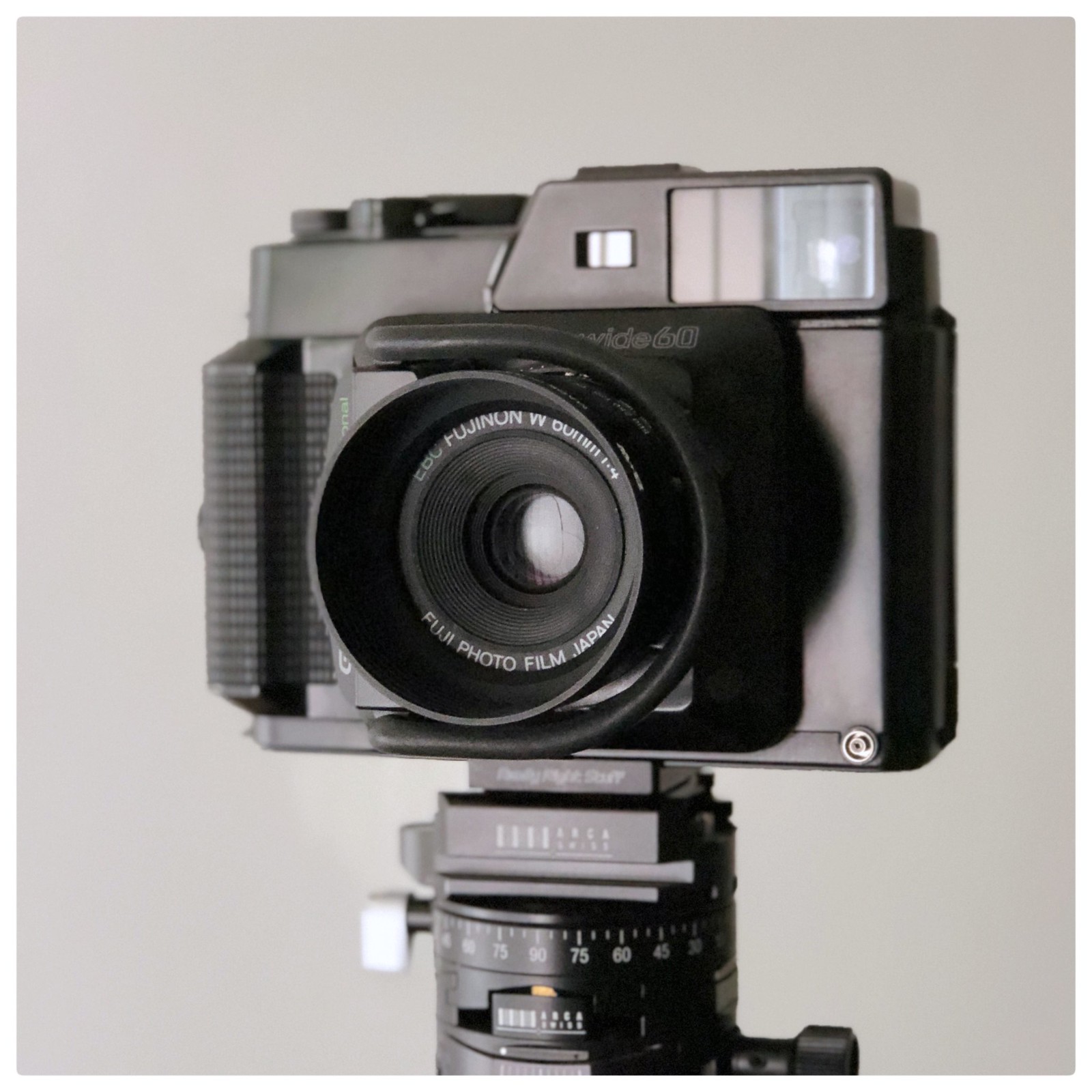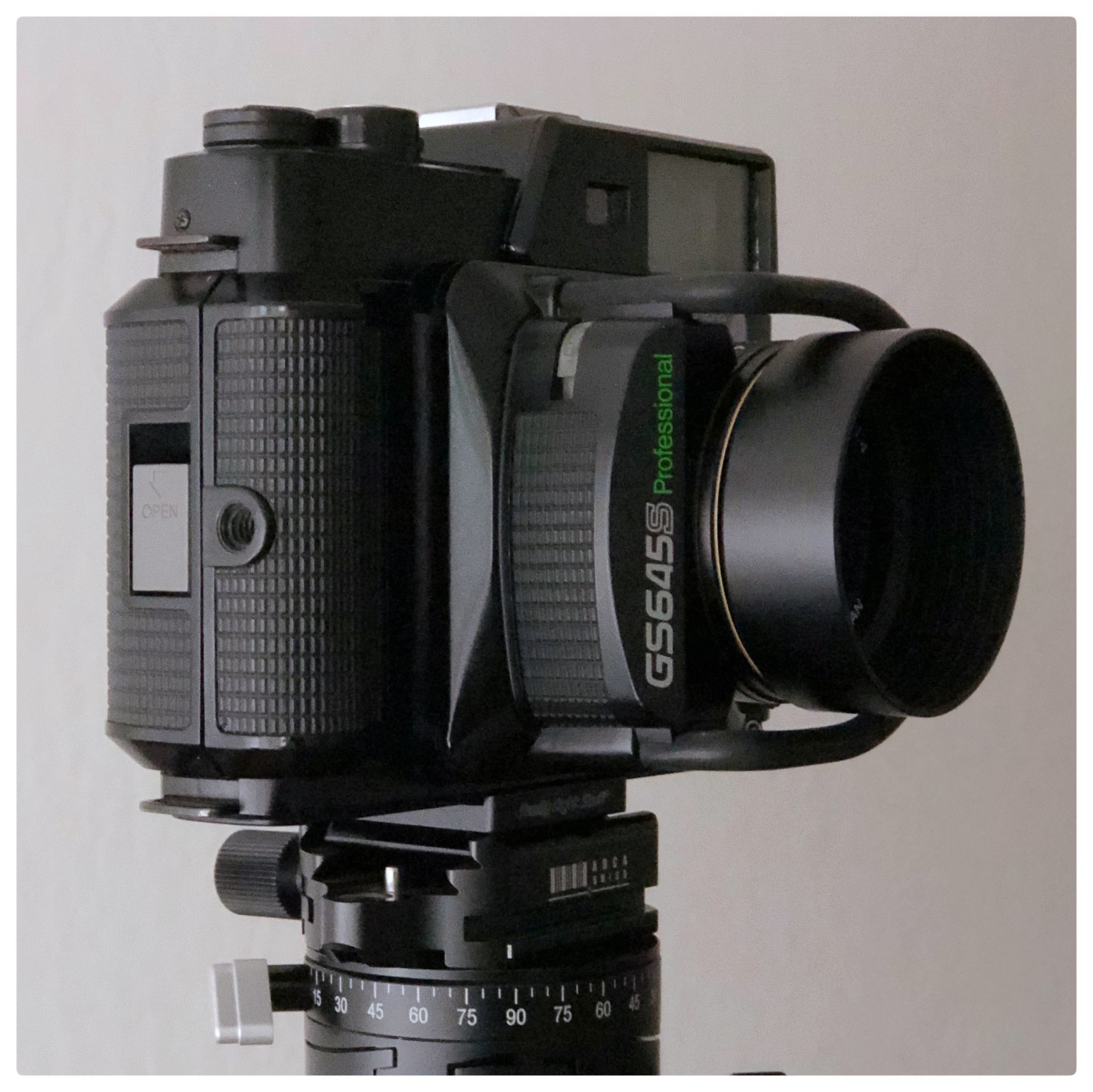Following up with the GS645S Wide 60 ... I had the third roll (Fuji 100) in the camera when I took it to a weekend event, finished it and shot another roll of Fuji HP5.
I processed the two rolls yesterday afternoon. Both rolls were processed with Kodacraft daylight processing tanks (you know, the ones with the 'lasagna' plastic roll to hold the film separated rather than a spiral reel—very easy and quick to load in a tiny changing bag 🙂) using HC-110 in my usual 1:49 concentration, 9 minutes at 74°F. I processed them freight train style: mix up one set of chemistry, develop one, develop the second while the first is fixing, etc. Works great, I had both rolls hanging from the start in 40 minutes.
Roll 3 had a problem when I unloaded the camera: the backing paper for some reason was a bit loose on the spool and I feared that a lot of it had been exposed to light when I handled it coming out of the camera. I snugged it as much as I could and wrapped it in foil ... happily, there is only a little edge darkening on a few frames, most of it is fine. This roll also pointed out that I have to spend a bit more time re-learning how to use flash to get better exposure: most of the flash photos I made with it are a bit too thin (but digital image processing will retrieve most of what's there). All the ambient light exposures for both rolls are right on the money, proving that Frank Marshman's complete service has left me with an excellent and well calibrated meter.
So far, I'm feeling that this camera is simply ideal for ISO 400 films: HP5 and XP2 Super (processed in HC-110) just sing with it. I found the ACROS 100 a bit slow for general use. Flash: I'll use the Sekonic L58 flash meter more of the time, I relied too much on the flash unit's auto metering function this time.
Scans a bit later today, if I have time. I'm thoroughly enjoying having one of these cameras again.. 😀
G
















